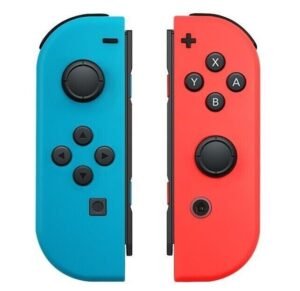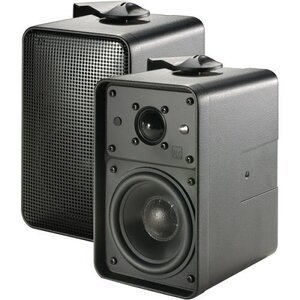Understanding the M1.6-0.67×10: What You Need to Know
What is an M1.6-0.67×10 Screw, and Why is it Essential?
When you’re working with machinery or electronics, the last thing you want is a tiny screw coming loose. The M1.6-0.67×10 screw, although small, plays a big role in the durability of everything from household gadgets to industrial equipment. Starting with the basics, the name of this screw tells us a lot:
- M1.6: This part indicates the metric thread size, which is 1.6mm in diameter.
- 0.67: This is the thread pitch, meaning the distance between threads is 0.67mm.
- 10: This number represents the length of the screw in millimeters.
So, if you’re looking for a small yet precise screw that fits snugly into devices, this may be the size you’re looking for.
Why Choose the M1.6-0.67×10 Screw for Your Project?
Many people find themselves wondering, “Why this specific screw?” This M1.6-0.67×10 screw isn’t just picked at random. It’s chosen because it’s compact, holds firmly, and is easy to use in tighter spaces. Think of projects like fixing electronics, gadgets, or any small assembly that needs precision without bulk.
Let’s look at a few reasons why this size is so popular:
- Compact but Reliable: Small devices need small screws that still hold up.
- Tight Fit: With a 0.67mm pitch, the threads are close together, making the screw firm when secured.
- Ideal for Tight Spaces: Perfect when there’s limited room, especially in electronics.

How Does the M1.6-0.67×10 Stand Out from Other Screws?
You might see terms like M1.2, M2, or M2.5 when browsing screw options. But the M1.6-0.67×10 size has a unique balance. Not too small to be fragile, but not too big to feel clunky. It sits right in the middle, offering durability and ease of use for precise tasks.
Here’s how it stacks up:
- Versatility: This size fits a variety of small-scale projects, unlike larger screws.
- Strength: The 1.6mm diameter provides a decent hold without putting stress on the materials.
- Easy to Secure: With a 0.67mm thread pitch, it’s less likely to strip or damage threads.
Real-World Uses of the M1.6-0.67×10 Screw
From personal electronics to industrial devices, the M1.6-0.67×10 is everywhere:
- Electronics Assembly: Found in items like laptops, phones, and cameras, where secure, small screws are essential.
- Medical Devices: Precision tools and devices often use this size for a firm fit without excess bulk.
- Automotive Sensors: Used in areas with limited space but high durability needs.
- Watchmaking: In the delicate art of watchmaking, this size is a common choice for secure and minimal parts.
Whether you’re a DIY enthusiast or a professional, this screw likely plays a part in projects where precision matters most.
Key Considerations When Choosing M1.6-0.67×10 Screws
Making the right choice with screws goes beyond size. Here’s a simple checklist to follow when choosing this screw:
- Material: Look for stainless steel or coated options for corrosion resistance.
- Length: Measure twice to ensure 10mm is the exact fit you need.
- Head Type: Flat, Phillips, or hex heads vary by project needs.
- Thread Type: Machine threads are best for tapping into metal or hard plastic.
Each of these aspects affects how well your project comes together and how durable it will be over time.
FAQs About the M1.6-0.67×10 Screw
Q: What is the difference between M1.6-0.67×10 and M1.6-0.35×10 screws?
A: The primary difference is the thread pitch. The 0.67mm pitch is wider, which creates fewer threads along the screw, while the 0.35mm pitch has more threads for a tighter grip. Choose based on the materials and amount of hold you need.
Q: Can M1.6-0.67×10 screws be used in plastic?
A: Yes, they can, especially if the plastic is dense enough to support machine threads. For softer plastics, however, you may need self-tapping screws designed to grip better.
Q: Where can I buy M1.6-0.67×10 screws?
A: They’re widely available at most hardware stores or online. Look for reliable sources, such as this trusted hardware retailer, to ensure you’re getting durable, high-quality screws.
Q: How do I know if my project needs M1.6-0.67×10 screws?
A: Generally, if the project involves small, compact components or electronics, this size is likely suitable. Consult the manual or project guidelines to ensure proper fit.
Q: Are there alternatives to M1.6-0.67×10 if I need a slightly different size?
A: Absolutely! Options like M1.6-0.35×10 or M1.8-0.80×10 are slightly different but might suit certain needs better.

Tips for Using M1.6-0.67×10 Screws Like a Pro
Getting the best out of your M1.6-0.67×10 screws is about more than just screwing them in. Try these tips for a smoother assembly:
- Use the Right Tools: A precise screwdriver helps prevent stripping.
- Pre-Drill Holes: For harder materials, a small pilot hole makes insertion easier.
- Handle with Care: Since these screws are small, a firm but gentle approach prevents bending.
- Check Tightness: Avoid overtightening, which can strip the screw or damage the material.
Common Mistakes to Avoid with M1.6-0.67×10 Screws
Even the best screw can be misused. Here’s what to avoid:
- Using the Wrong Screwdriver: A mismatched driver can easily strip the head.
- Skipping a Pre-Drill: On tougher materials, not pre-drilling can make it hard to install.
- Over-Tightening: This can damage the thread or, worse, weaken the hold.
- Ignoring Material Compatibility: Metal screws like these aren’t ideal for soft materials unless specially designed for them.
Wrapping Up: M1.6-0.67×10 in Your Next Project
The M1.6-0.67×10 screw might seem small, but its impact is anything but. Whether you’re assembling a delicate gadget, fixing a device, or simply doing some maintenance, this screw’s balance of size, thread pitch, and length makes it invaluable.
Don’t overlook the details. Choosing the right screw—like the M1.6-0.67×10—can mean the difference between a lasting fit and a loose end.
By understanding what makes this screw so unique, you’re better equipped to make smarter choices in your work.
Looking for more detailed specs? Check out this technical guide to see how the M1.6-0.67×10 compares to other common options.














Post Comment